Winter Tongariro Crossing Guide
Winter offers the opportunity to walk through the magnificent snow-covered landscape without the summer crowds. The winter season is based on snow levels on the track and is usually between April to the end of October / mid September.
The arrival of the winter snow brings with it a new set of challenges including changes in weather and track conditions. These changes require more preparation, skills, winter equipment and the need for a guide.
By joining Adrift Tongariro on a guided tour no outdoor experience is necessary, all training and tuition is given on the day. Crampons, ice-axes and helmets are supplied for a fantastic alpine experience.

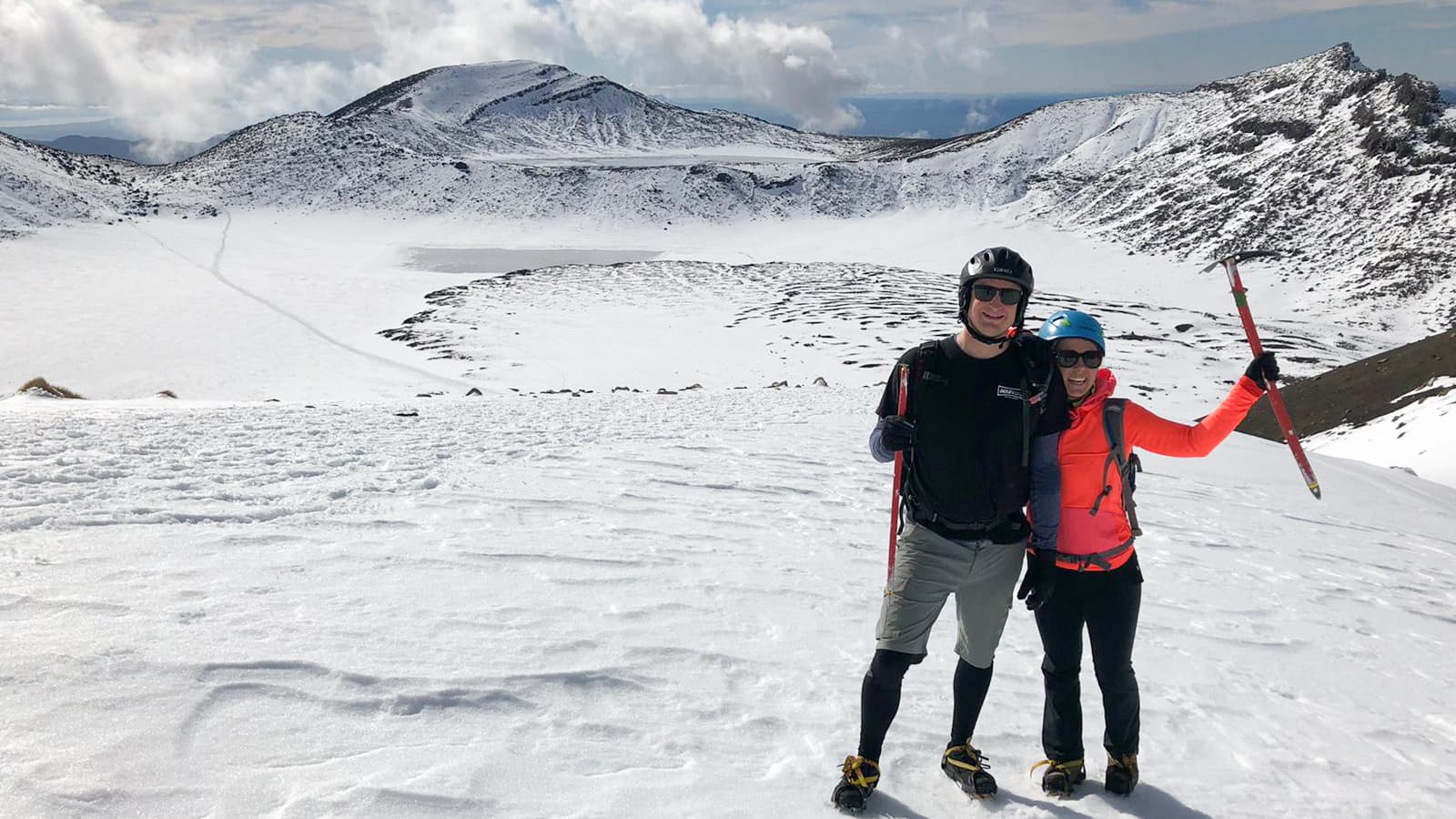
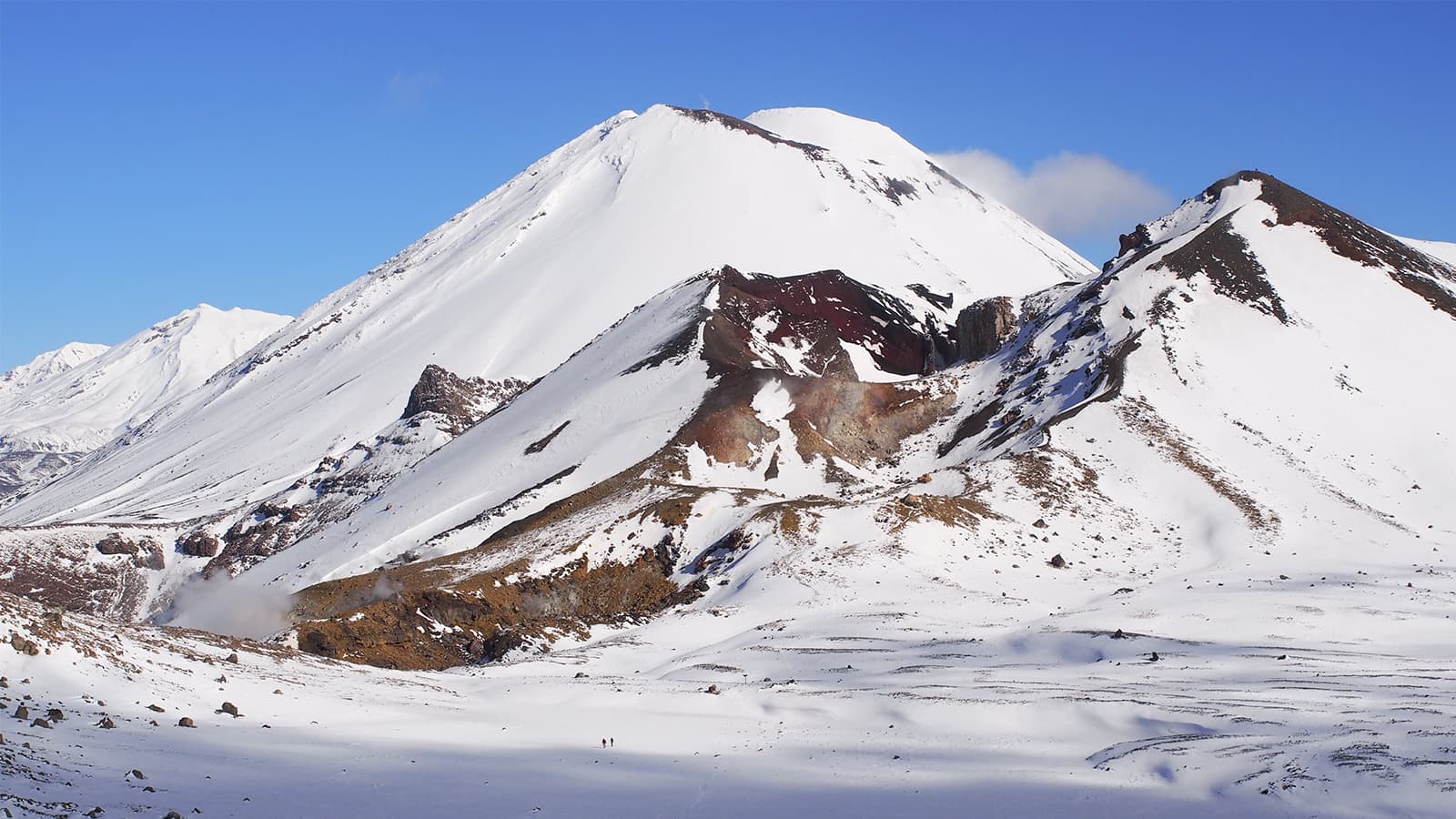

Winter vs summer
In winter the colours and textures of summer have been replaced by a pristine blanket of snow. Walk through the snow-filled South Crater, descend a steep snow and ice- covered slope to the frozen Emerald and Blue Lakes. The snow capped peaks of Mt. Ruapehu, Mt. Tongariro and Mt. Ngauruhoe are staggering as they tower over.
Sacred mountains
The alpine lakes and summits of the mountains are sacred to the local Māori tribe Ngāti Hikairo ki Tongariro. Respectfully, they ask that summits are not climbed, waterways are not touched, and frozen lakes not walked on. Additionally we like to show our respect by ensuring we leave no trace, and even helping the environment by retrieving wrappers from those who have gone before us.
Risks
Additional hazards in winter
In any adventure activity, there is an element of risk involved. Over winter however there are additional hazards, including snow and ice, avalanche risk, sub-zero temperatures and a risk of hypothermia and slipping which could result in injury.
The safest and best way to experience this incredible walk in winter is therefore to join an expertly-guided expedition.
This is a Tongariro Alpine guided tour. We do not guarantee reaching the Ketatahi end. Safety regarding weather, avalanche, ice and hypothermia are taken into consideration when securing our exact route for the day.
Volcanic risk
You are walking on an active volcano with the safest possible NZ Volcanic Alert Level of zero. However volcanoes can erupt at any time without notice. Te Maari, Red Crater and Ngāuruhoe vents have all been active within the last 100 years – the most recent eruption occurred from Te Maari in 2012.
Volcanic experts say that hiking the Tongariro Alpine Crossing is vastly safer on our guided tour than driving a car. The staff & management of Adrift Tongariro take all practical steps to identify & minimise potential danger.
Geothermal hazards
There is geothermal activity around the Tongariro Alpine Crossing. The steam vents near emerald lakes should not be approached. Your guide will point these out and guide you to stay on the marked track at all times to avoid injury.
Track conditions
Between April and October, the track can be very icy and slippery, or buried under a thick base of snow hiding the track markers.
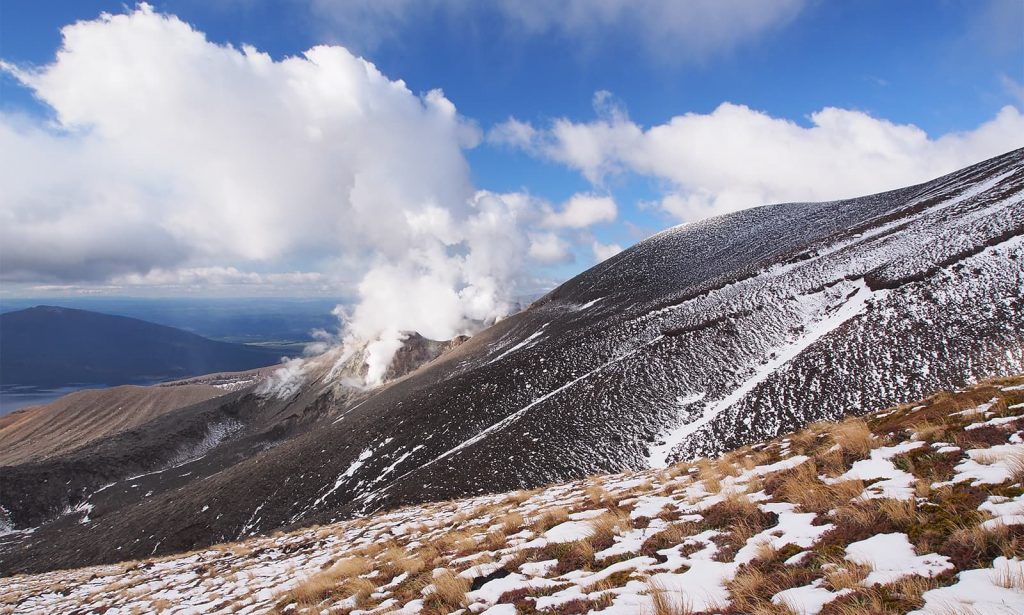
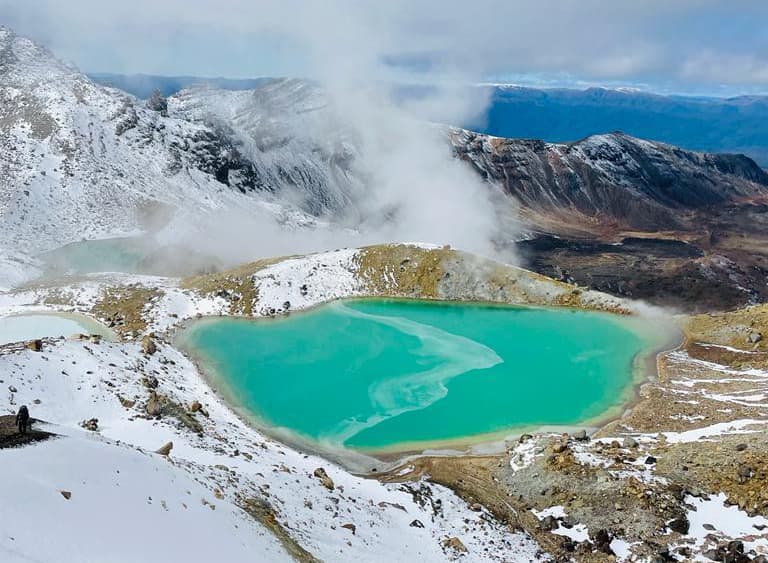
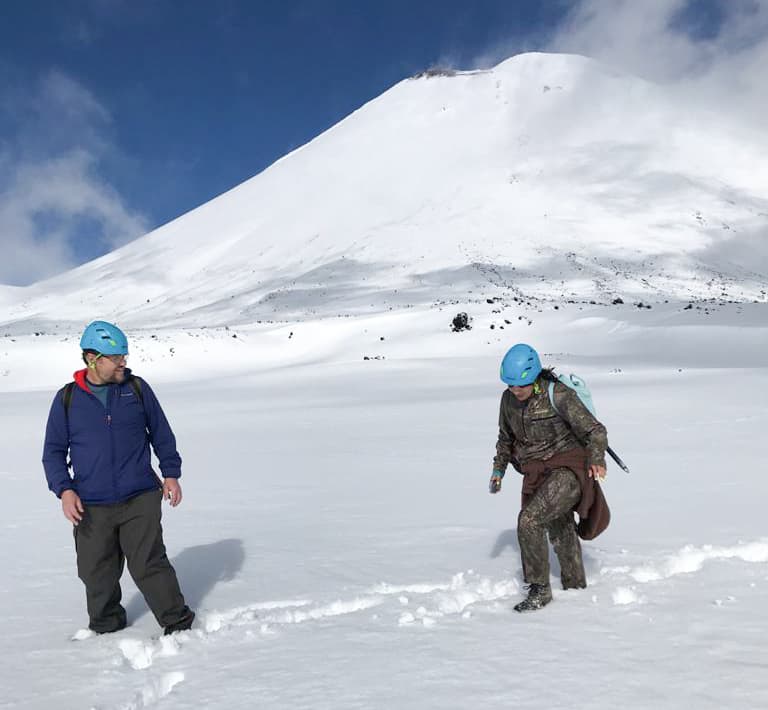


Weather
There is nothing better than experiencing this winter wonderland on a beautiful crisp winter day, however the alpine environment is extremely changeable and you must be prepared for anything. It is common to experience very cold temperatures, strong wind, heavy rainfall, poor visibility, snow and even sun all in one day. With over 20 years experience in the area, we have a good understanding of conditions year-round, so if you have any doubts, consider going guided with us. See our Tongariro Weather page for additional weather information.
The highest point on the crossing is at the Red Crater (1886 metres). On a calm day, Red Crater is at least 10°C colder than Taupō and 5°C colder than the start of the track – subtract another 2°C for every 10 km/h of wind. Red Crater is usually considered the point at which your guide will decide if everyone can continue or as a group turn back.
Monitoring and experience
Leading up to the trip Adrift monitors forecast charts from across a range of sites. While on tour our guides constantly assess the weather and conditions. With over 20 years experience our guides are fully qualified and have the experience to handle all conditions.
Adrift Tongariro will deem the weather to be unsafe if there is consistently 10mm or more of rain combined with wind gusts of 70 km/h or higher, forecasted for the 6 hour period starting at the commencement of the tour.
Gear requirements
Conditions can change quickly, we have compiled a list of gear which will have you ready for whatever mother nature throws at us. The idea is to layer your clothes to trap warm air in and keep cold wind out. Start with a base layer of polypropylene/merino, add an insulation layer of fleece/wool and finish with a waterproof shell layer.
Cotton is not suitable for these conditions so please no cotton t-shirts or jeans. Footwear needs adequate tread, be able to fit crampons too and in winter come above the ankle to provide support (no trainers, runners or slip-on shoes). Not sure if your gear is suitable? Don’t worry, our guides will assess your clothing and gear and Adrift Tongariro has available for hire personal equipment, footwear and clothing to supplement that which you don’t have and need.
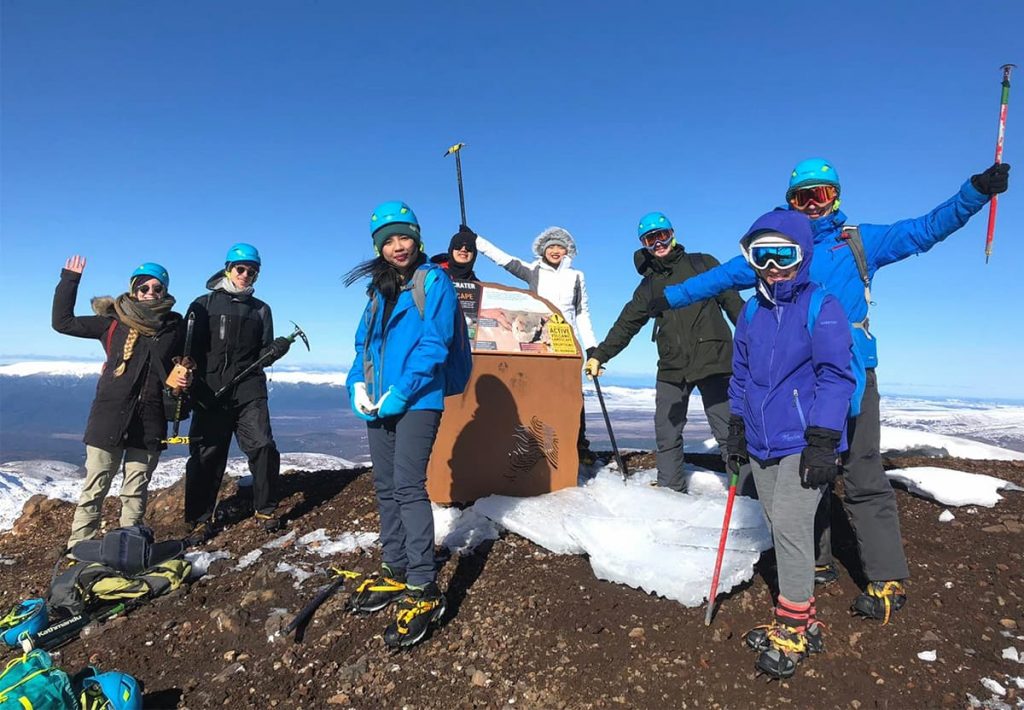
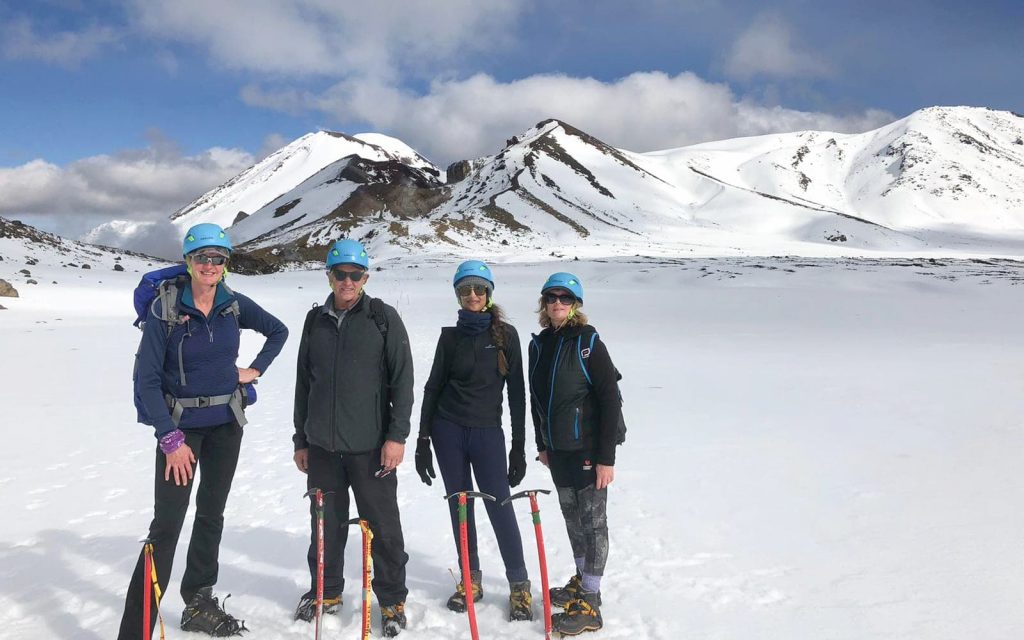
What to bring
- Water (1-1.5 litres)
- Personal medications (e.g. Asthma Inhaler, blister protection etc)
- Sunscreen, sunglasses
- Backpack per person
- Hiking boots
- Thermal longs and/or walking trousers & over-trousers
- 3 warm top layers (wool, merino, thermals, fleece, soft shell etc. are good layers)
- Waterproof raincoat
- Warm hat and gloves
Winter equipment
A helmet, crampons and ice axe are included in all our guided tours if they are required for the conditions. All training and tuition is given on the day.
